Petín – Stimulates the Senses
Wednesday, August 27, 2014
The province of Ourense, in the south of Galicia, has the distinction of being the only landlocked province in the region. That said, finding a waterfront eatery is never a problem. Galicia is well known for its wet winters. It’s hardly surprising then that dozens of lakes can be found scattered throughout the area. Some provide water for public consumption and others, along the river Sil, produce clean and renewable hydro-electricity.

One of my favourite lakes is the Encoro de San Martiño: a vast body of water bordered to the southwest by the village of Petín and to the northeast by the town of A Rúa.
The history of the area dates back to the Celts. In the first century BC, Romans occupied the land. Petín and A Rúa came to prominence as an important river crossing around 77 AD following the completion of the Via Nova (The Roman road from Braga in Portugal to Astorga in Castile & Leon).

Leaving the careterra nacional (N-120), we drove down towards A Rúa turning right at the first roundabout. From here we could see the modern road bridge spanning the river Sil. Sitting alongside this is the old river crossing known as Puente de la Cigarrosa. This Romanesque-style bridge dates back to the 18th century. In the spring of 1809, during the Napoleonic invasion, this bridge was the scene of a vicious and bloody attack. History records that the young women of Petín rose up against the French troops, from nine in the morning until sunset, inflicting heavy losses on their enemy. Today the area is far more peaceful.
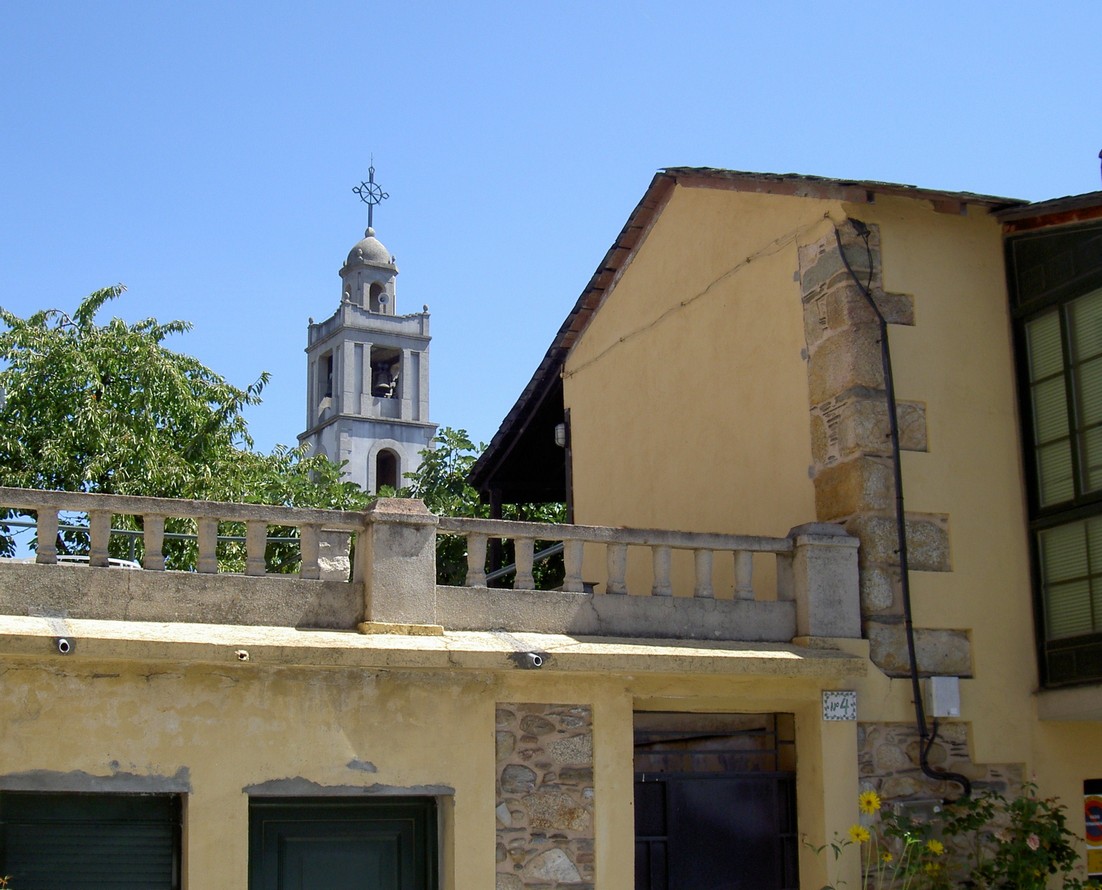
The village of Petín is centred on a small square. Three bars compete for trade. During the summer months, street-side seating gives the place a very French feel: quite surprising given its past history. Narrow lanes lead away from the square. Strolling around the alleyways feels like you’ve stepped back in time. Head for the church: its spire can be seen peering down over rooftops. From here it’s a short walk to the paseo or promenade that runs along the edge of the lake.

The air felt warm and heavy as we stared out across the lake. On the far shore, we could just make out our lunchtime destination. A rumbling tummy was the only incentive we needed to hop back in the car and nip around to the far side.
The covered terrace of the restaurant O Refuxio in O Aguillón, a district of A Rúa, provides the perfect place from which to enjoy this beautiful setting. All meals are freshly prepared and well worth the wait. On this occasion we chose the homemade hamburgers accompanied with proper chips: quite a rare treat in these parts.

While we soaked up the scenery and tucked into our burger, small children gathered around an old man sitting at the lakeside fishing. Hungry parents looked on, grateful for a short intermission.

After lunch we strolled around the edge of the lake before heading out towards Viana do Bolo. We’d hoped to find one of the many bodegas open and stock-up on the local wine. This area falls under the Valdeorras D.O. (denominacion de origin), and is famous for its fruity white wines made from the godello grape. Unfortunately, none were open but we did stumble across a beautiful church on the outskirts of La Caseta.

Spain has some of the most picturesque coastline in Europe, but not all waterfront eating relies on the Mediterranean to provide stunning views. The next time you’re in the area take a look at Encoro de San Martiño, you won’t be disappointed.

Vine Watch – week 21
With the grapes changing daily my thoughts turn to the harvest. Picking when the grapes reach their optimum ripeness will ultimately determine the quality of the finished wine.
When I first started making wine, 8 years ago, the consensus among my neighbours was that picking began two weeks after Amandi had picked. The Amandi vineyards are among the most prestigious in the Ribeira Sacra DO. Located on the steep valley sides of the river Sil, the grapes benefit from a favourable micro-climate.
These days I determine my own vendimia (grape harvest) date based on science. By testing the grapes for sugar content (brix) and acid levels (acid and pH) I can calculate the optimum ripeness of the grapes.
Over the next few weeks I’ll conduct a weekly test on a sample batch. As ripeness approaches, these tests will become more frequent until ideal levels are reached and we can finally gather in our crop.

Vineyards of the Amandi
Copyright © 2014 Craig Briggs
*************************************************************************
Craig and Melanie own and operate a luxury farmhouse rental property called Campo Verde. To find out more about a stay at Campo Verde and Galicia in general, visit their website getaway-galicia
Craig’s book, Journey To A Dream, is available exclusively from Amazon, to purchase your copy click here for your national Amazon store.
Find out more about Craig, and Galicia or look him up on Facebook
 0
Like
Published at 12:00 PM Comments (0)
0
Like
Published at 12:00 PM Comments (0)
Sober – Tipsy with Success
Wednesday, August 20, 2014
Earlier in the week, Alberto Nunez Feijoo president of the Galician government, made a significant announcement. The municipality of Sober, in the province of Lugo, would from this day forth be officially recognised as an area of Galician tourism (Municipio Turistico Gallego).
To avoid any confusion, the correct pronunciation of Sober is ‘Sob’ (as in to weep) and ‘air’ (as in the air we breathe). The mayor of Sober, Luis Fernández Guitián was overjoyed with the announcement. He was later quoted as saying, “This award will form the cornerstone of our campaign to have the Ribeira Sacra recognised by UNESCO as a World Heritage Site”.

Throughout Galicia there are 43 municipalities officially recognised as areas of Galician tourism. Of these, only 11 are situated in the province of Lugo.
As a resident of this outstandingly beautiful municipality, this prestigious award came as no surprise; perhaps I’m biased. I’ll let you decide.
The president of the Galician government noted eight main reasons for awarding Sober this honour.
1. The increase in the number of hotels since 2010
There are three main hotels in the area. Pick of the bunch is Casa Grande de Rosende. Dating back to 1511 this Pazo or manor house was extended to its current size towards the end of the 18th century. In 2005 the hotel was completely restored after a disastrous fire.

2. The presence of 35 bodegas (wineries) in the area.
The vineyards of the Amandi are internationally recognised as one of the most difficult terrains for growing and harvesting grapes. The unique micro-climate found in the valley of the river Sil produces rich fruity red wine, with naturally high alcohol levels.
The actual number of bodegas is probably 100 times that. Stroll through any village in the area and I’m sure someone will invite you into theirs to share a glass or two.
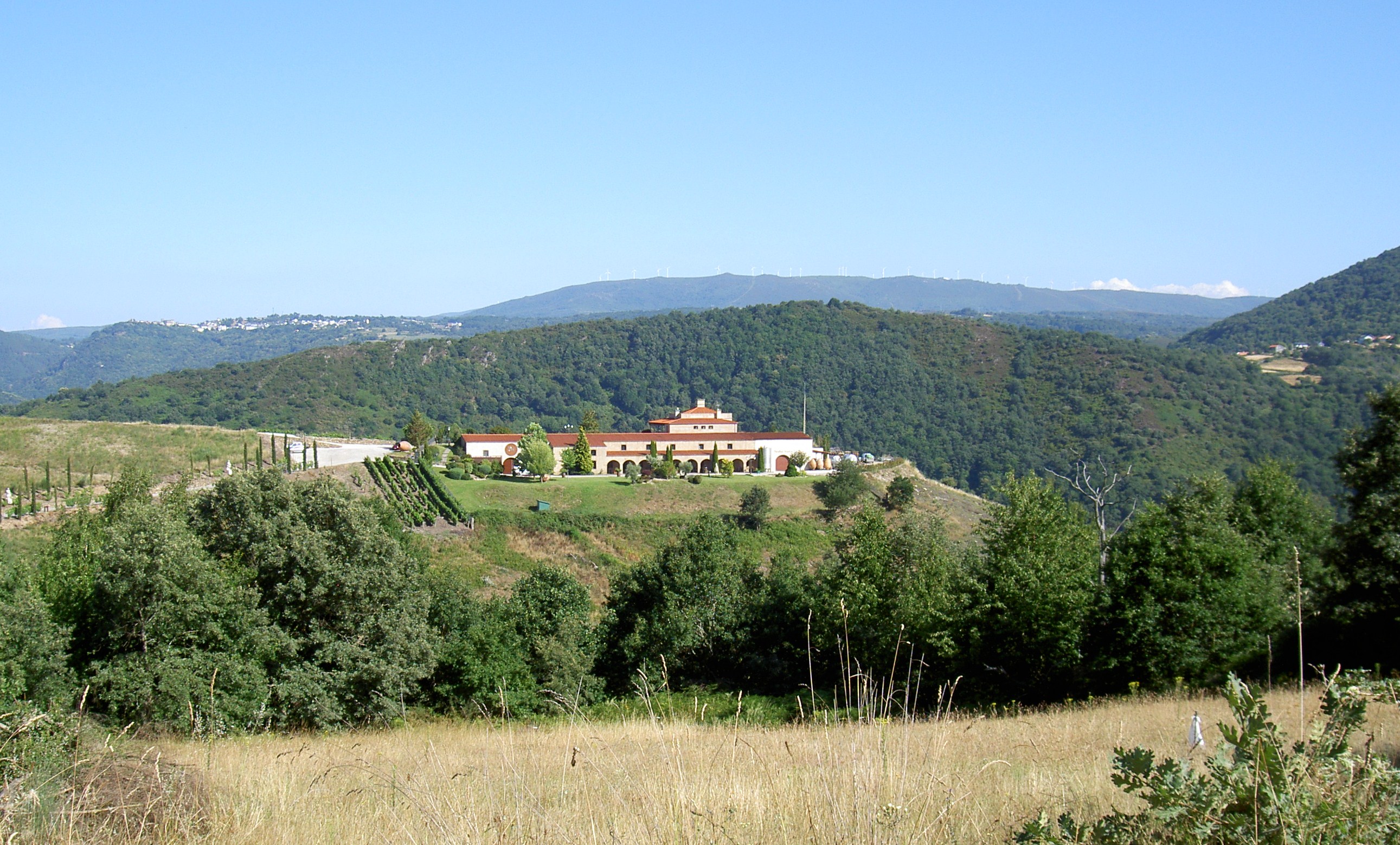
3. Six recognised hiking trails.
It’s nigh-on impossible to travel through Galicia without stumbling across the scallop shell symbol; sign of the Camino de Santiago. Sober is no exception. Part of the Alternative Winter route passes through the municipality on its way to Monforte de Lemos. Other walking trails connect medieval churches or pre-historic petroglyphs: carved into rocks by ancient Celtic communities.
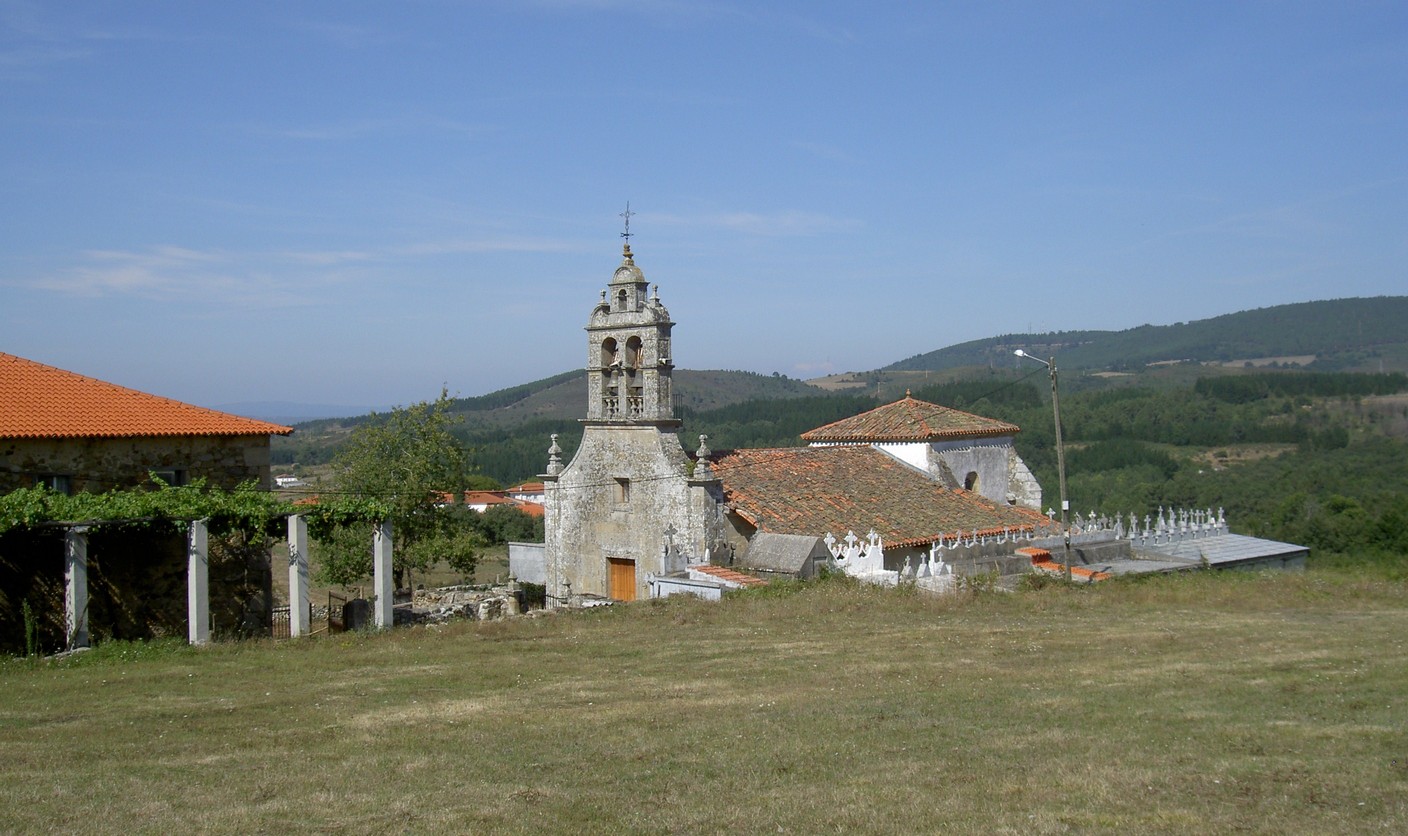
4. Nine viewing points (Miradores) of outstanding natural beauty.
Everyone has their favourite and I’m no exception. In my opinion, you can’t beat Pena do Castelo. At an altitude of over 2000 feet (627m) the panorama takes your breath away. Far below, the river Sil meanders slowly downstream. Terraced vineyards rise from its banks, climbing like a staircase towards the sky and tall mountains fade into the distant horizon. To visit Galicia and miss the beauty and majesty of Sober and the Ribeira Sacra, would be a travesty.

5. A rich cultural heritage including the Amandi wine fiesta (Feira do Viño de Amandi).
This annual event gains in popularity every year. It’s easy to see why. Visitors can sample delicious fruity wines, produced in this unique climate, completely free of charge: inky-red Mencia and crisp white Godello – what a treat.

6. The tourist train in Doade.
This bright-yellow, road-going tourist train looks slightly out of place among ancient architecture and breath-taking countryside. It offers visitors the opportunity to ride through the vineyards of the Amandi and see first-hand the challenges facing the area’s viniculturists. The tour ends with a wine tasting at the Regina Viarum winery, one of the most prestigious in the area.
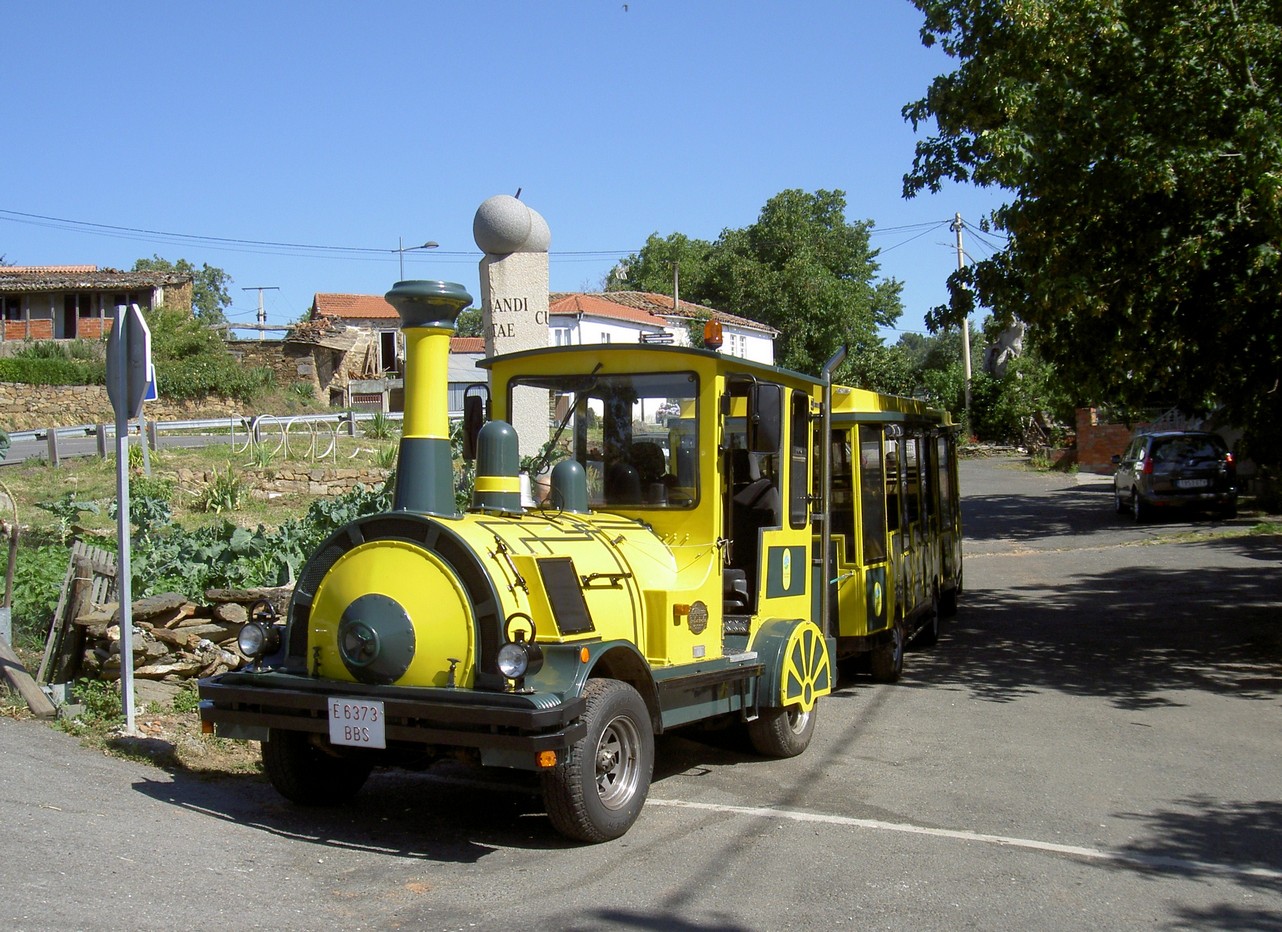
7. River Cruises along the Sil.
Six different vessels ply their trade on the river Sil. Most take about two hours to cruise along this amazing river and through the fjord-like canyon. My personal favourite departs from Os Chancis. This intimate cruise, for up to 10 guests, offers an onboard wine tasting as you drift quietly through the canyon.

8. The ancient potter’s art in the village of Gundivos.
Fifty years ago this traditional skill was almost lost to the ravages of time and economic migration. The village of Gundivos has a long tradition of manufacturing pottery: practical everyday items like jugs and bowls. Their distinctive black glaze makes them unique in appearance and much sought after as designer pieces.

Today’s politicians are often derided for their apparent aloofness and self interest but the mayor of Sober, Luis Fernández Guitián has proved through his actions that he cares passionately about the area and community he presides over. Sober has a great deal to offer, not only to Galicia but Spain as a whole. Make sure you visit us soon, you won’t be disappointed.
Vine Watch – week 20
The wait goes on. Favourable weather is helping to plump up the fruit. Work continues daily to remove dead and diseased grapes from the maturing bunches. Hard work now will enhance the quality of the finished wine.

Copyright © 2014 Craig Briggs
*************************************************************************
Craig and Melanie own and operate a luxury farmhouse rental property called Campo Verde. To find out more about a stay at Campo Verde and Galicia in general, visit their website getaway-galicia
Craig’s book, Journey To A Dream, is available exclusively from Amazon, to purchase your copy click here for your national Amazon store.
Find out more about Craig, and Galicia or look him up on Facebook
 0
Like
Published at 12:04 PM Comments (5)
0
Like
Published at 12:04 PM Comments (5)
Experience the Camino
Wednesday, August 13, 2014
In 2012, just over 900,000 tourists visited Galicia (source: Institute of Tourism). Of those, less than 200,000 were pilgrims walking El Camino de Santiago (Way of St. James). It’s hardly surprising then, that when I mention I live in Galicia most people say, “Where?”, and even less surprising that any reference to the Camino is followed by, “What’s the Camino?”
El Camino de Santiago was one of the most important catholic pilgrimages of the Middle Ages. Pilgrims would walk from the French border to the cathedral of Santiago de Compostela to visit the shrine of St. James: a distance of over 800 kilometres. Nowadays, there are many different routes to Santiago and many different reasons for undertaking the challenge.
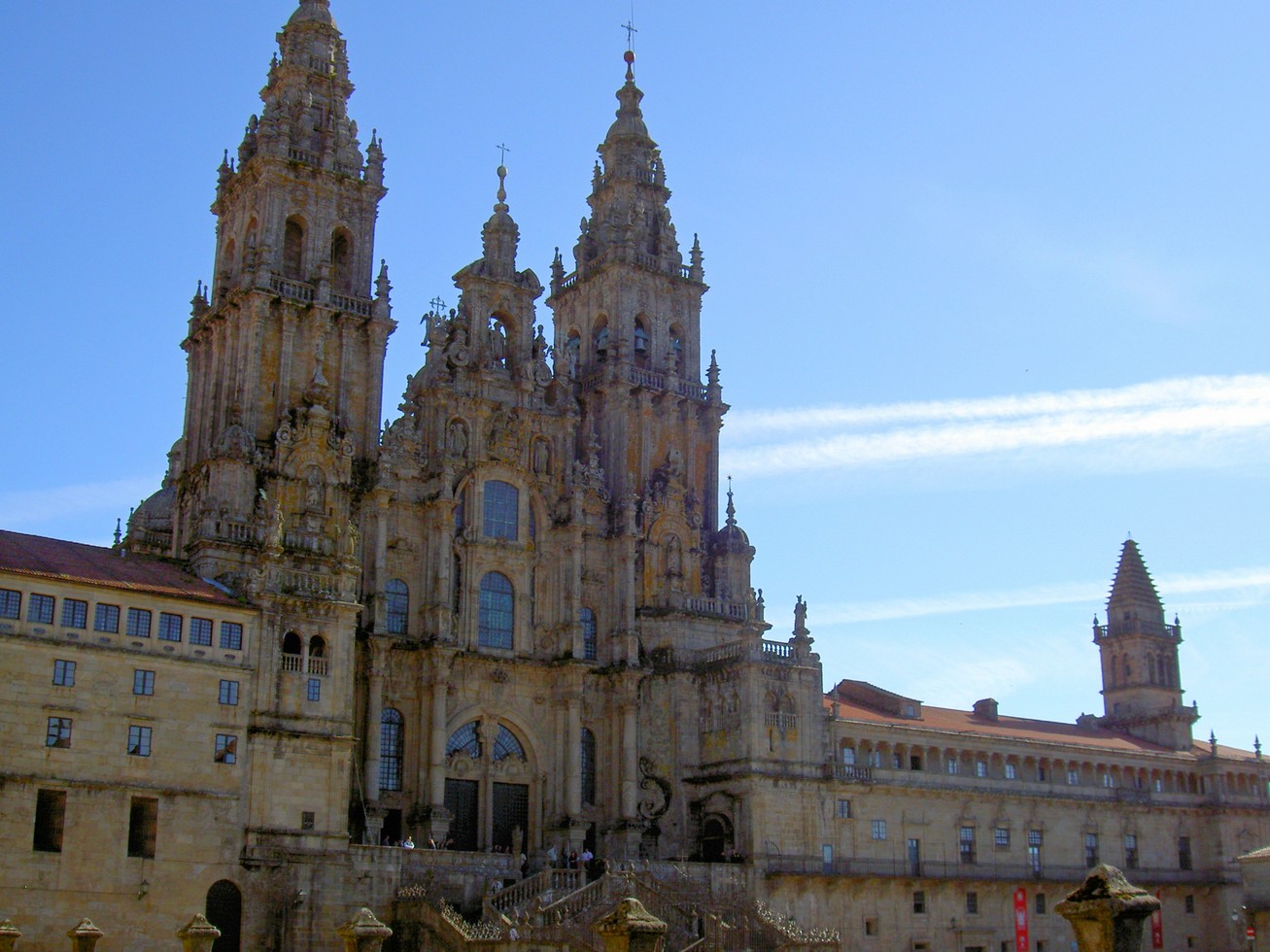
To encourage tourism and increase the number of pilgrims walking the Way, a minimum distance of 100 kilometres was introduced. This is policed using a Credencial or Pilgrim’s Passport: stamped along the route at churches and overnight hostels (Albergue’s or Refugio’s). On production of a completed passport, at the Pilgrim’s office in Santiago, a Compostela or certificate is issued proving that the holder has completed the Camino.
Unfortunately, not everyone has the time, inclination or ability to walk even the minimum distance. Besides which, the romantic notion of wandering down rural pathways; enjoying the stunning countryside is far removed from the daily challenge to body and soul. The opportunities to stop, take breath, and actually get to know a place, are few and far between.
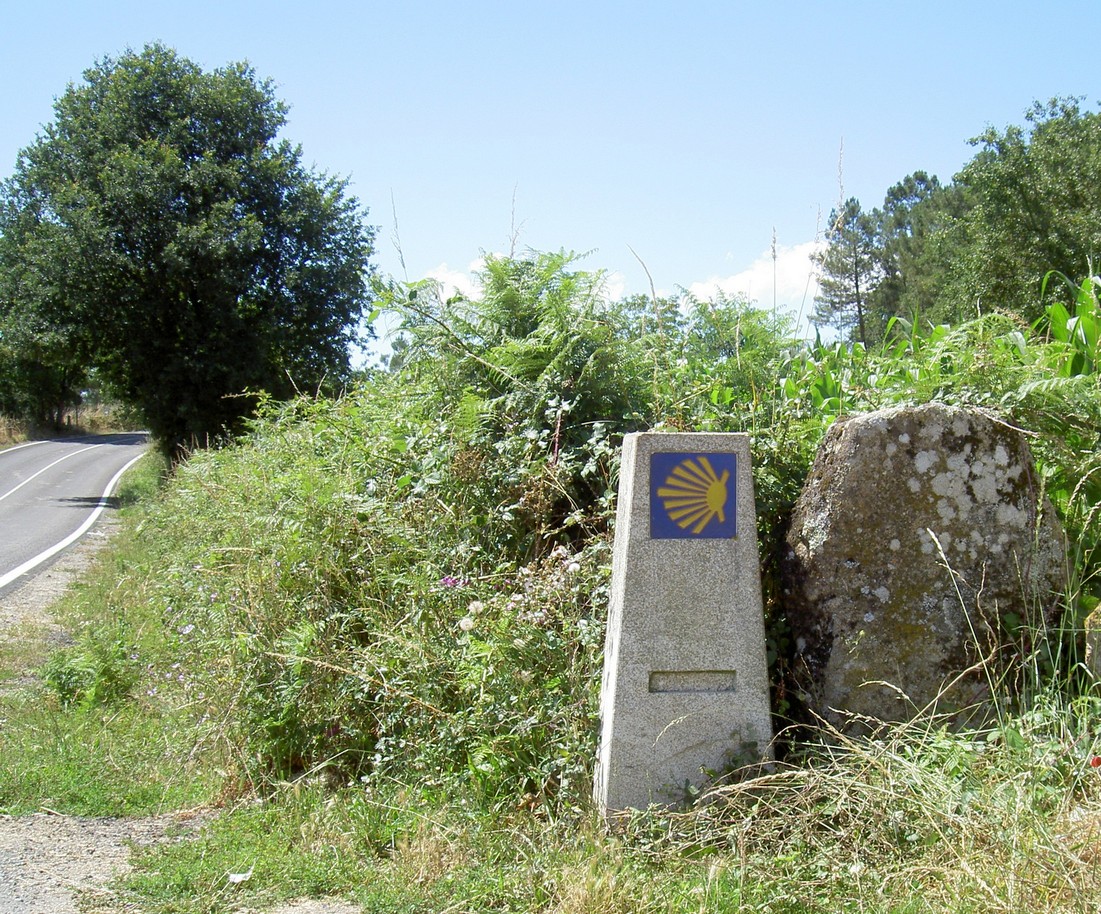
Galicia has far more to offer visitors than just the Camino; but to visit the area and fail to experience it would be an opportunity missed. Signs for the Camino are found throughout the region. They take the form of a scallop shell or contemporary representation of one. The choice of short walks is endless but one of my favourites is the five and a half kilometre stretch from Negrelos to the medieval bridge of Pedroso on the eastern edge of the province of Pontevedra.
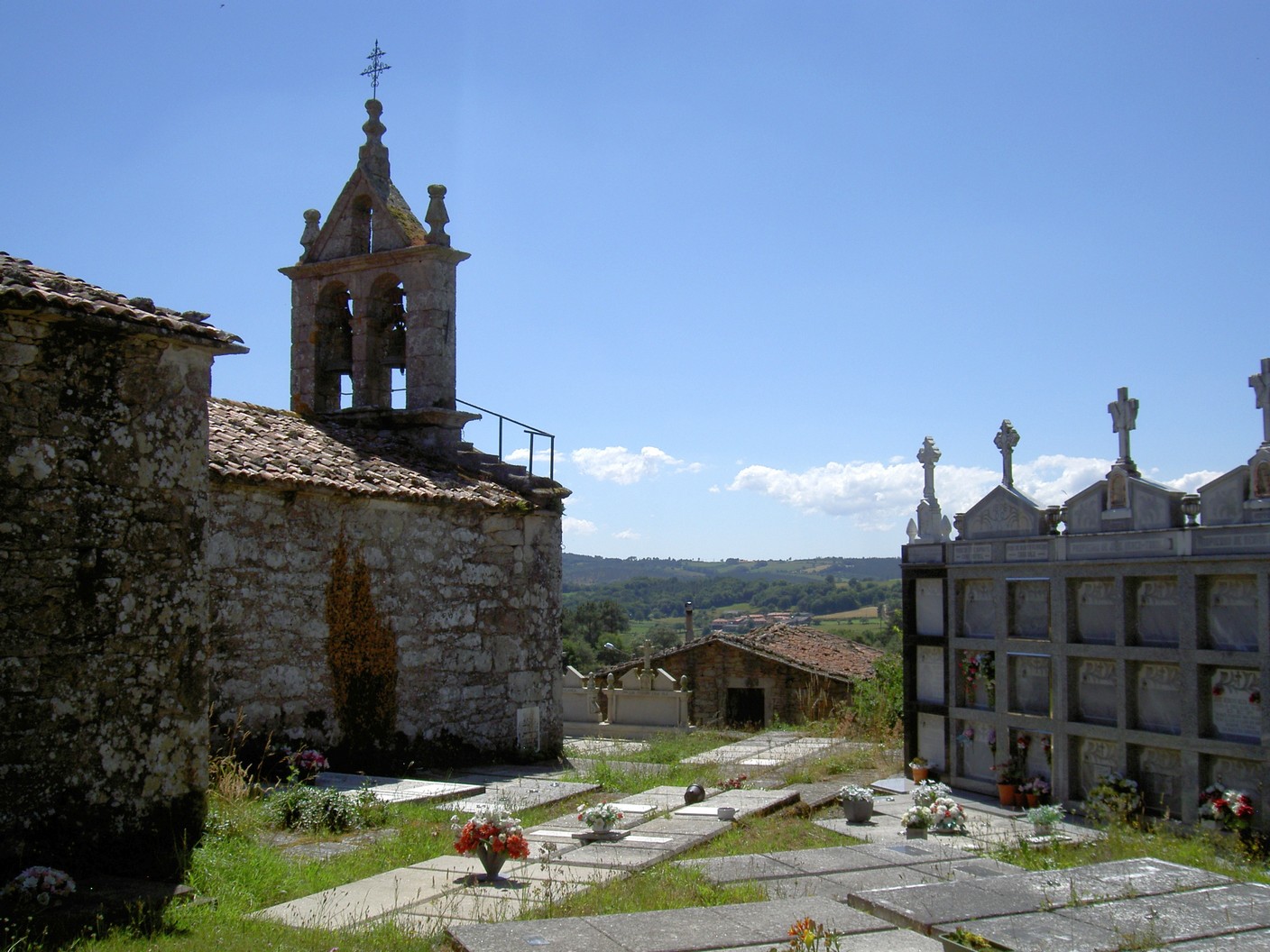
The starting point of the walk is the church in the district of Negrelos: an excellent example of Romanesque architecture. The views over the surrounding countryside, from within the church grounds, are beautiful and so typical of Galicia: rolling hills, green pastures, and scattered patches of forests, all stitched together with a web of dry-stone walls.
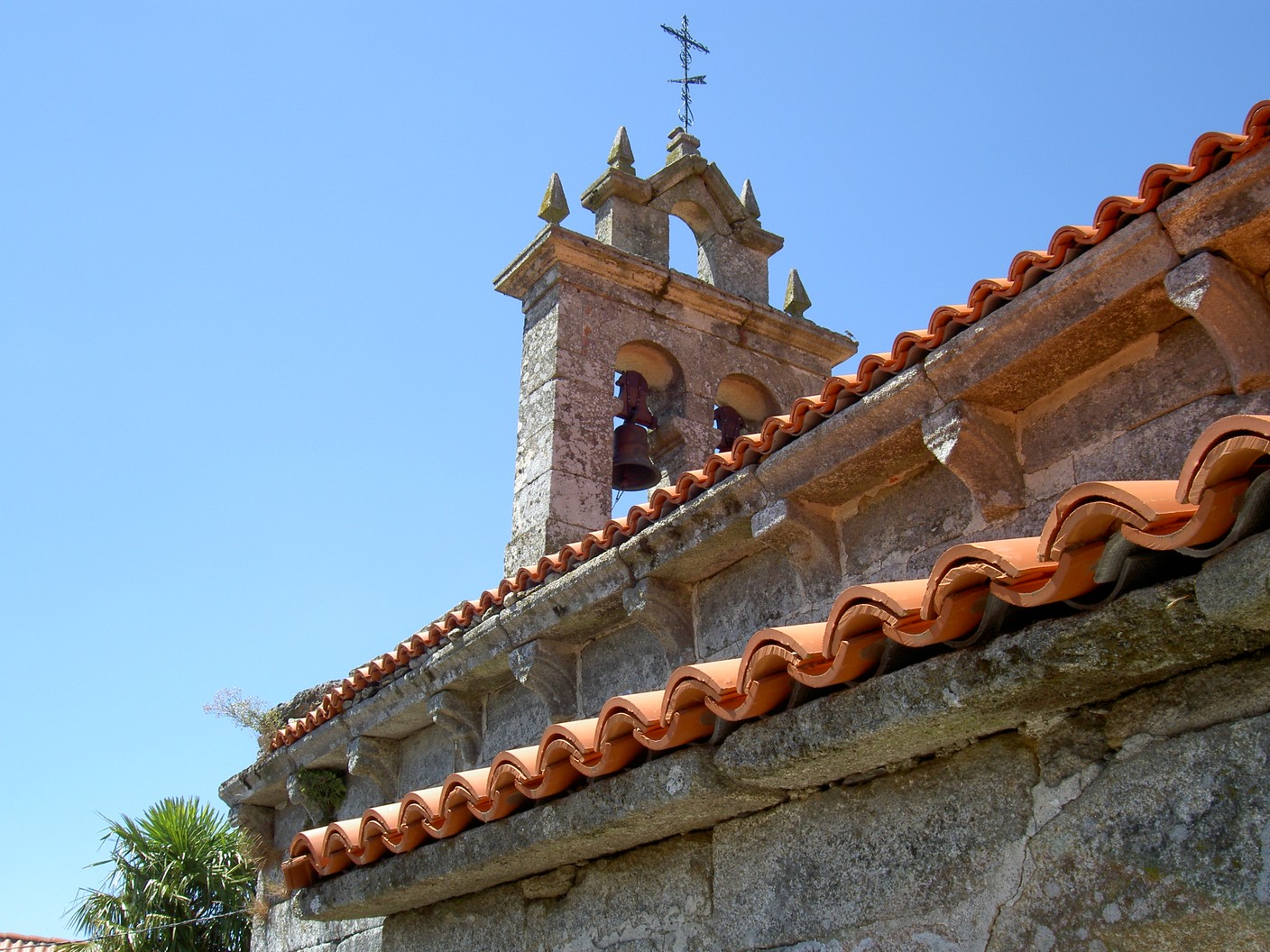
The EP-6203 is a single track lane that winds its way through this idyllic countryside. Old, stone farmhouses are dotted along its course and cattle graze lazily in fertile pastures. Occasional shade is provided by ancient woodland of oak and chestnut.
Before long you’ll reach the village of Pazos. A slight detour from the road leads to the centre of the village and the church of Pedroso. Work began on its construction at the beginning of the 13th century and other than the occasional roof restoration has remained unchanged.
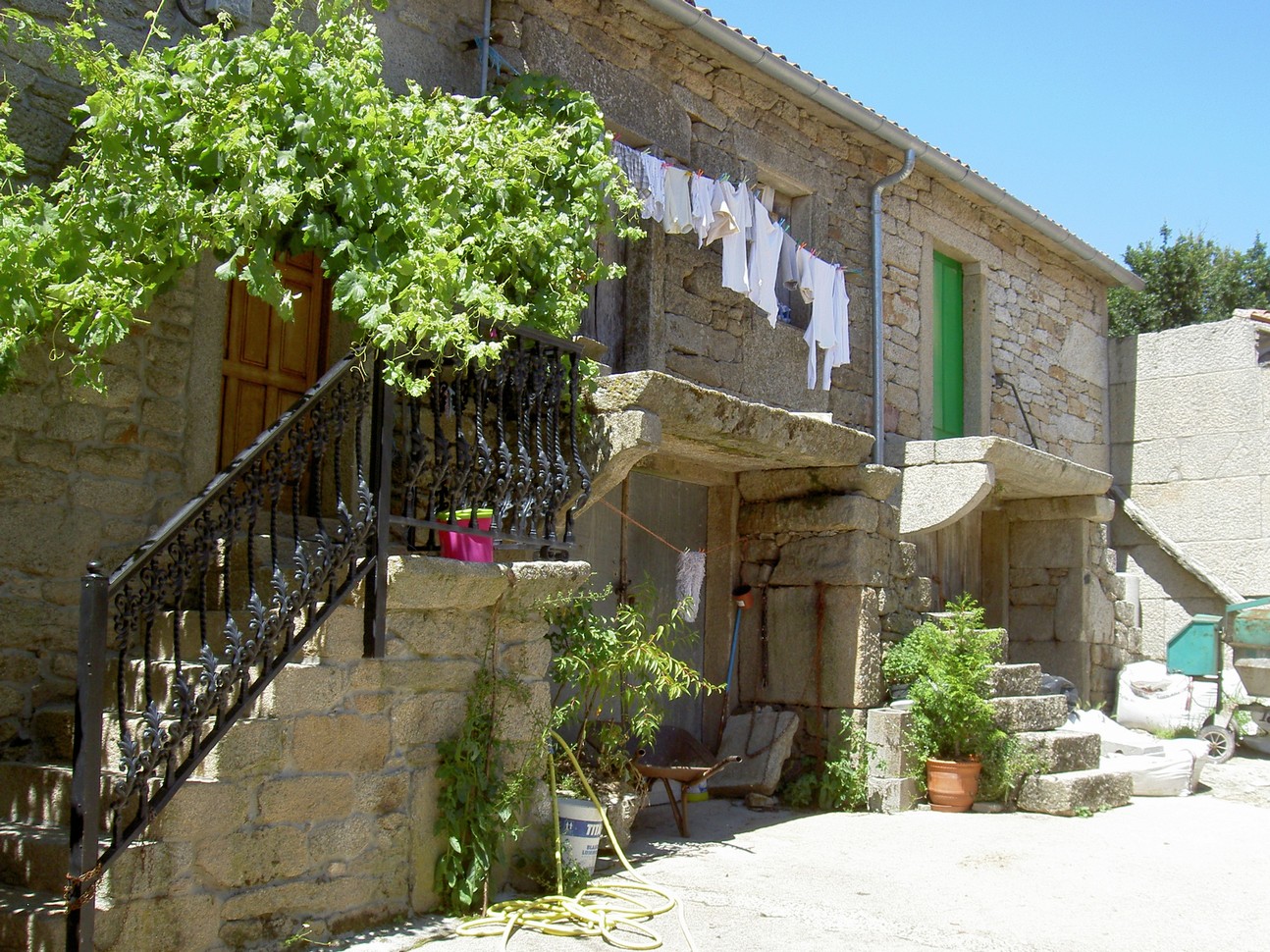
The next village along is Laxas: a time capsule of rural life. It’s a quaint village set in the heart of a farming community. From here it’s a short walk to the bridge of Pedroso. Built in the 12th century, this medieval bridge has stood the test of time. It’s quite a sobering thought to stand in the middle and consider the lives of those who, for the past 800 years, have walked this same route.
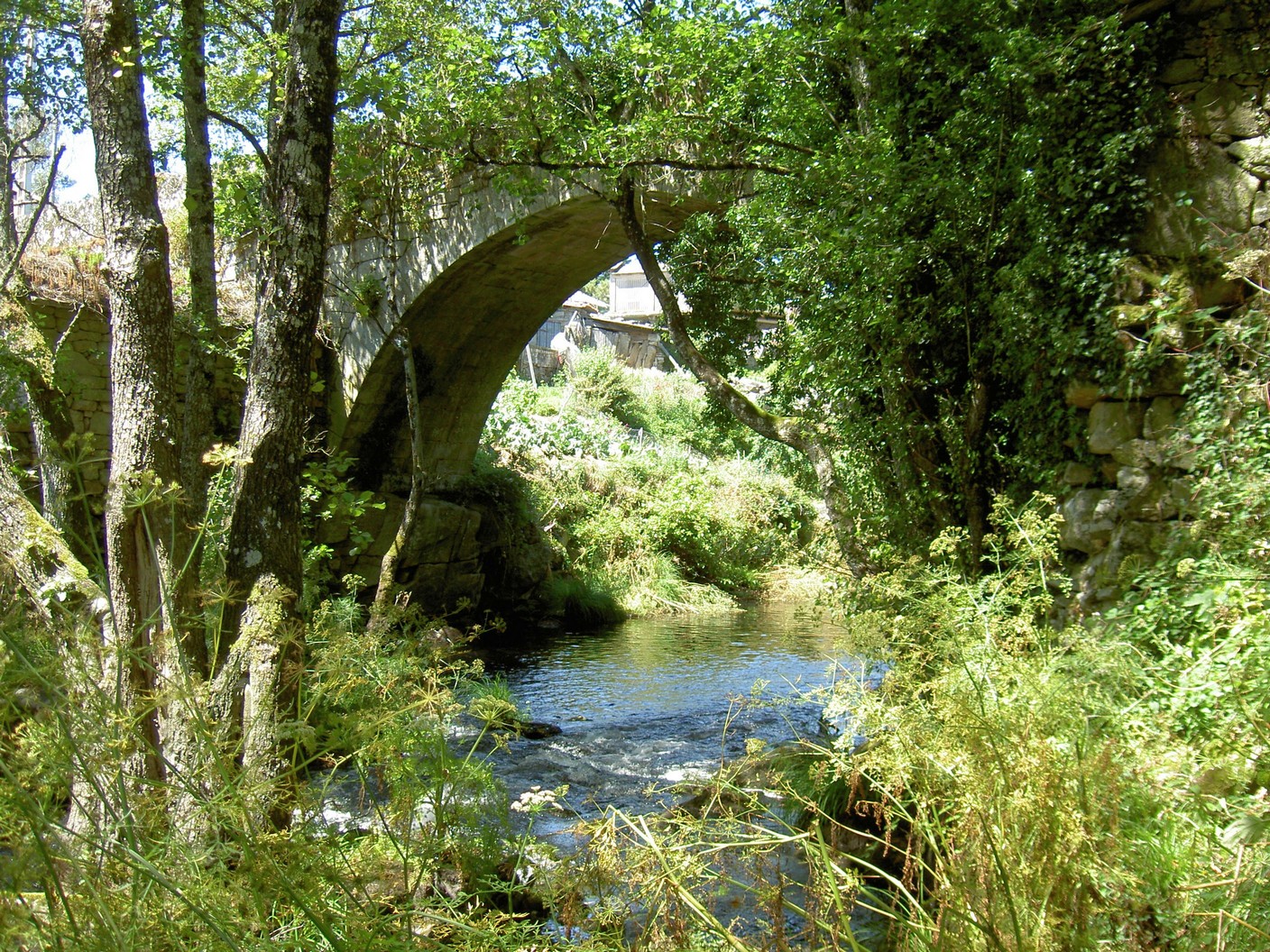
Below this ancient crossing flows the Rio Arnego. To experience the Camino, stop, close your eyes, and listen to the babble of pilgrims drifting down the ages.
Vine Watch – week 19
The grapes continue to change in both colour and size. The reds change from pink to inky red. The whites loose their pea-green appearance and become more translucent as they begin to swell. With just over a month to go, they’re on the final stretch of the growing season. All we ask for now is sun, sun, sun.
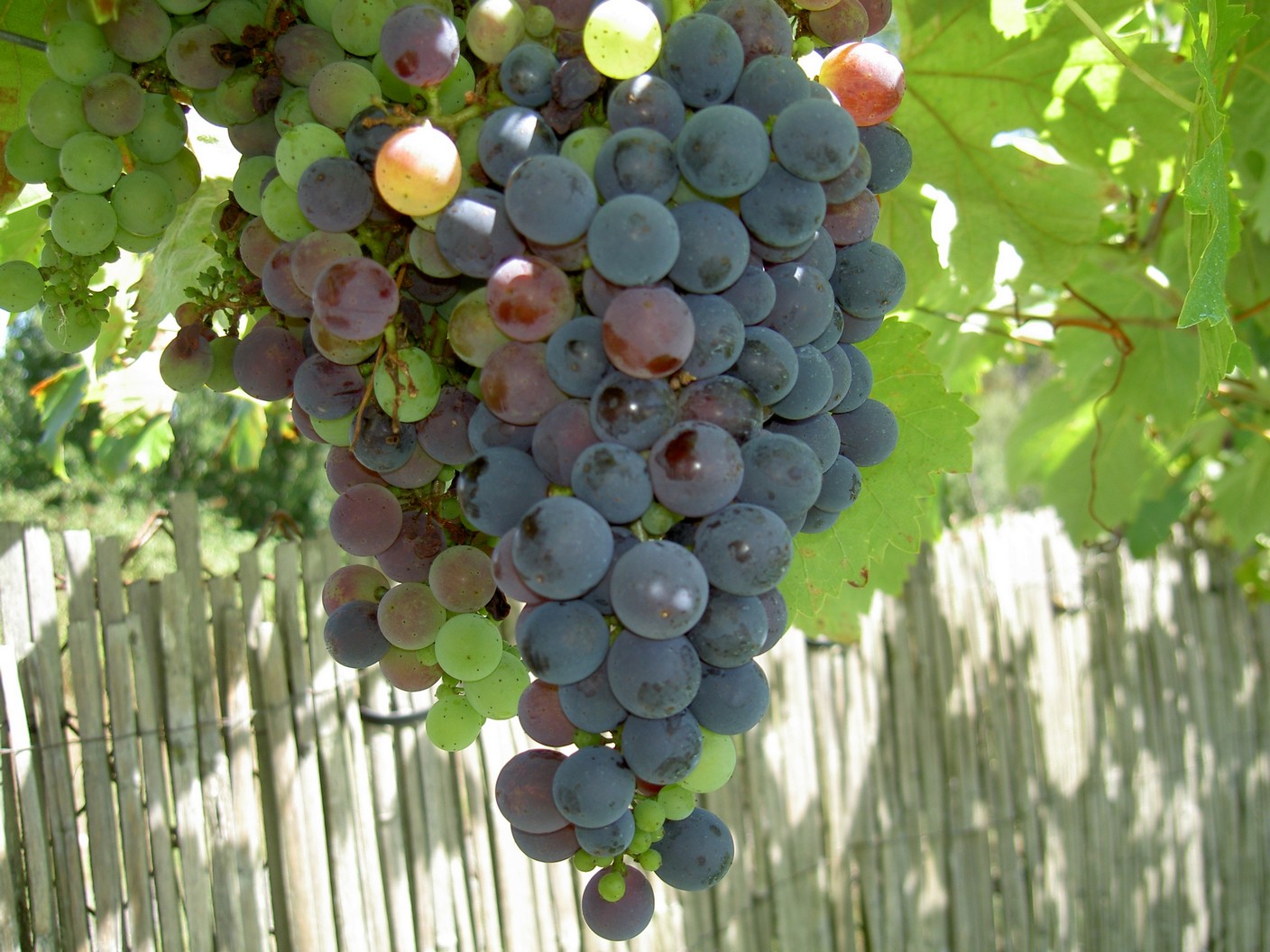
Copyright © 2014 Craig Briggs
*************************************************************************
Craig and Melanie own and operate a luxury farmhouse rental property called Campo Verde. To find out more about a stay at Campo Verde and Galicia in general, visit their website getaway-galicia
Craig’s book, Journey To A Dream, is available exclusively from Amazon, to purchase your copy click here for your national Amazon store.
Find out more about Craig, and Galicia or look him up on Facebook
 0
Like
Published at 11:59 AM Comments (0)
0
Like
Published at 11:59 AM Comments (0)
Discover Galicia for less than Half Price
Saturday, August 9, 2014
Spectacular Scenery, Beautiful Surroundings, Great Food and Friendly Locals.
If you’ve ever wanted to visit Galicia and explore this amazing part of Spain, now is the time.
Due to a break in bookings we are offering our luxury farmhouse at an unbelievable price.
From the 27th of August until the 6th September the total rental cost for up to four guests is just 500 euros a huge saving of over 50%.
This is a genuine opportunity not to be missed. The dates are fixed and the price is low.
For more details on the house and Galicia visit our website GETAWAY-GALICIA
To make your booking use the contact form on the website
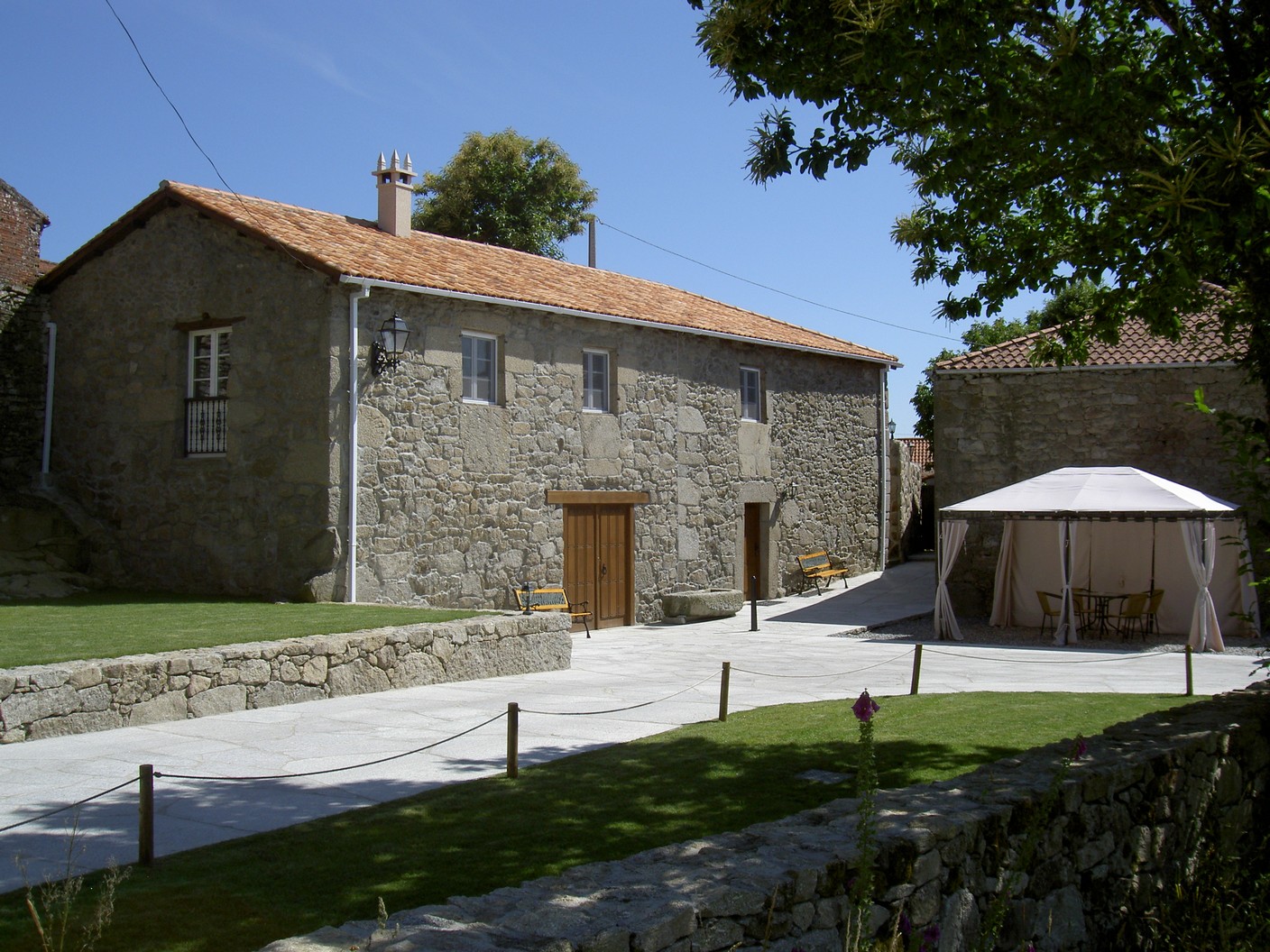
 0
Like
Published at 9:44 AM Comments (0)
0
Like
Published at 9:44 AM Comments (0)
Secrets of San Clodio
Wednesday, August 6, 2014
The town of San Clodio is situated on the eastern edge of the area known as the Ribeira Sacra in Galicia. It’s a small town with a long and sometimes brutal past. Throughout its history, this small parish has formed an important link in the region’s communications, sitting as it does on the banks of the river Sil. On the opposite riverbank lies the town of Quiroga, gateway to the O’ Courel.
In the 1st century BC Romans ruled, brought here by the area’s rich gold deposits. Such was their desire for this most precious of metals that, a few kilometres upstream at Montefurado, they excavated a 400 metre long tunnel to divert the river’s natural course. The result left a three kilometre meander isolated from the river, enabling the Romans to extract the gold directly from the dry riverbed.

During the Middle Ages, the discovery of the remains of Saint James brought a different type of explorer to the area. Christian pilgrims, en route to Santiago de Compostela, were able to use the infrastructure and communication routes first created by the Romans. The route along the Sil valley, known as the winter route, provided an easier alternative for those travelling from France.
San Clodio’s most recent history is also its most brutal. During the Napoleonic invasion, many parts of Galicia remained apathetic to their invaders; indeed, some Spanish generals actively embraced their conquerors. However; pockets of resistance remained, led in many cases by the clergy.
In 1809 resistance fighters ambushed and killed a French officer near the tunnel at Montefurado. Reprisals were swift and merciless. Soon after this attack a troop of French soldiers entered the village of San Clodio. When one local resident insulted the commanding officer by refusing to shout, “Vive la France”, he was summarily executed. What followed were a series of war atrocities to rival any in history.

The French went on the rampage, slaughtering anyone they found and stealing the village strong box. Villagers took refuge in mountain caves only to be discovered and massacred. In the nearby village of Chenzas a young girl was kidnapped; she was never heard of again. Eyewitness accounts recall carts, laden with corpses, being pulled through the village by oxen.
But the French didn’t have it all their own way. In the 1950’s, during work to widen the existing railway line, a macabre secret was unearthed. The remains of several French soldiers, still in uniform and carrying their weapons, was discovered.

The arrival of the railroad in 1883 brought a new era of prosperity to the town. Today the station is no more than a quaint building of historical interest.
Another of the town’s outstanding architectural landmarks is the Ponte de Ferro or Iron Bridge. Construction began in 1883 under the supervision of Pelayo Mancebo. The fact that it is still in daily use is a testament to its design.

Today, San Clodio is a sleepy little town just off the main N-120 highway. It sits in a beautifully tranquil valley, surrounded by mountains. Strolling next to the river or through its quiet streets, it’s difficult to imagine what horrors it has witnessed. The next time you’re driving through the area, take a break and explore the secrets of San Clodio.

Vine Watch – week 18
Work continues daily in the vineyard, removing dead grapes from the maturing bunches and dying foliage infected by the black rot disease. After so much effort and such an excellent start to the season, it’s soul destroying work. This year is all about damage limitation and saving as much fruit as possible.
Copyright © 2014 Craig Briggs
*************************************************************************
Craig and Melanie own and operate a luxury farmhouse rental property called Campo Verde. To find out more about a stay at Campo Verde and Galicia in general, visit their website getaway-galicia
Craig’s book, Journey To A Dream, is available exclusively from Amazon, to purchase your copy click here for your national Amazon store.
Find out more about Craig, and Galicia or look him up on Facebook
 0
Like
Published at 2:44 PM Comments (0)
0
Like
Published at 2:44 PM Comments (0)
Spam post or Abuse? Please let us know
|
|